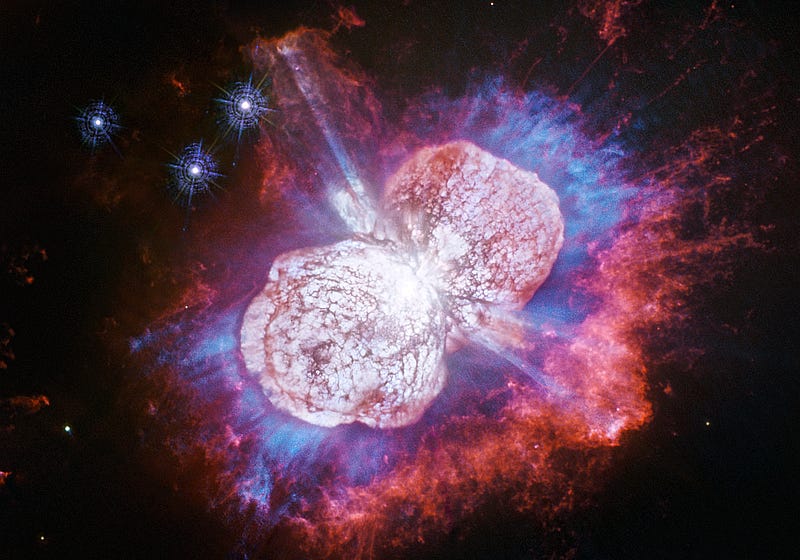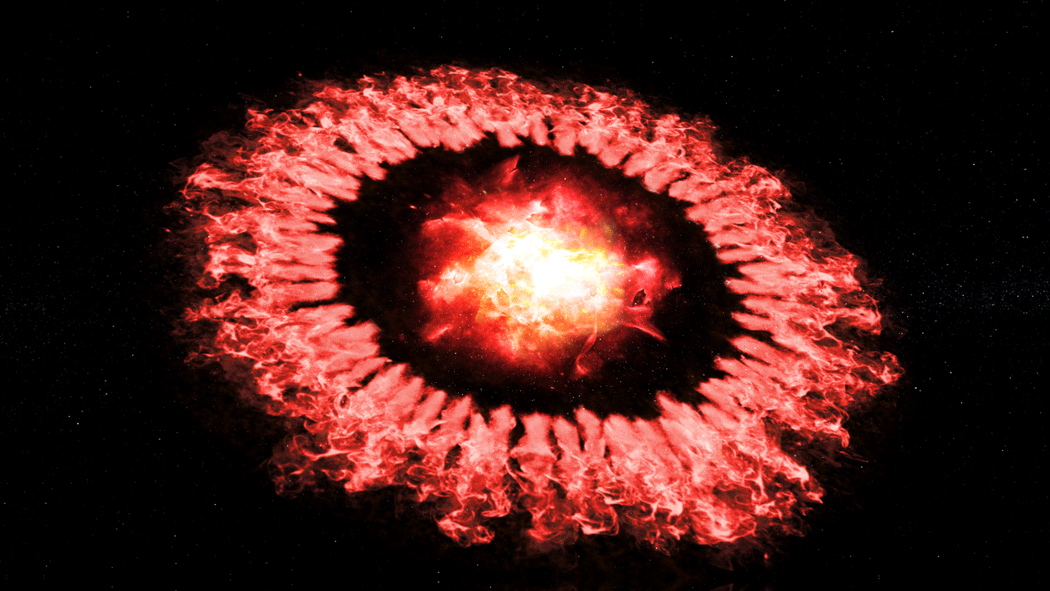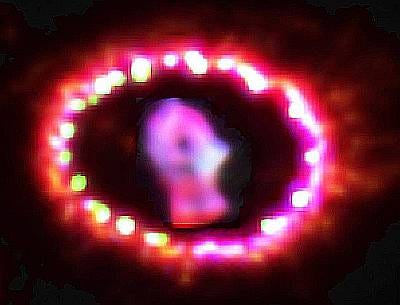Astounding Supernova Discovery Could Transform Stellar Physics
Written on
Chapter 1: The Enigmatic SN2016iet
A colossal supernova, detected by the Gaia satellite, could represent the largest ever observed by astronomers. This extraordinary explosion, situated a billion light years from our planet, has the potential to alter our understanding of the final stages of the universe's most massive stars.
The stellar phenomenon known as SN2016iet erupted long before life emerged on Earth, during a period when all land masses were united in a single supercontinent called Rodinia. This remarkable event was first observed by the Gaia spacecraft on November 14, 2016, with light traveling towards us at nearly 300,000 kilometers per second (over 186,000 miles per second). After three years of thorough investigation, researchers have concluded that this supernova is the most significant ever documented, leading physicists to reconsider the fundamental laws governing such cosmic eruptions.

The supergiant star Eta Carinae is anticipated to meet a similar fate, exploding as a massive supernova in the future. Prior to its inevitable demise, it has been expelling material, mirroring the behavior of SN2016iet just before its explosion. The "bubbles" captured in the accompanying image by the Hubble Space Telescope were first documented in 1840, possibly resulting from a collision with another stellar body. Eta Carinae is located 7,500 light years from Earth.
“When we first realized how remarkably unique SN2016iet was, my immediate thought was, ‘Did we mess up our data?’ Eventually, we found out that SN2016iet is an extraordinary enigma, located in a galaxy that was previously uncharted, a billion light years away,” explains Sebastian Gomez, a graduate student at Harvard University.
Chapter 2: The Lifecycle of Massive Stars
Orbiting 54,000 light years away from its galaxy's core, this member of a binary system was once more than 200 times the mass of our Sun.

For millions of years leading up to its explosion, the star shed a significant amount of its mass—losing about 35 solar masses in its final decade. At the moment of the supernova, it still retained between 55 and 120 solar masses, resulting in an unprecedentedly large explosion, the largest recorded by astronomers to date.
When the shock wave from this monumental explosion reached the mass previously expelled by the star, it triggered a secondary shock wave that propagated through the surrounding material.
Supernovae and Stellar Lifecycles
The lifespan of a star is primarily determined by its mass, with the most massive stars having the briefest lives. The star that gave rise to SN2016iet existed for merely a few million years before its spectacular end. In contrast, our Sun formed approximately 4.5 billion years ago and is expected to shine for an equivalent duration before exhausting its hydrogen supply.

The progenitor of the SN2016iet supernova was a rogue star, situated far from its original dwarf galaxy. As it neared the end of its life, the supermassive star lost around 85 percent of its mass over a few million years, forming a gas "cocoon" around itself. When the star detonated, the force of the explosion interacted with this surrounding gas, resulting in a secondary shock wave.
Observatories such as the Fred Lawrence Whipple Observatory in Arizona and the Magellan Telescopes in Chile were employed to study this unprecedented supernova flagged by GAIA. Everything about this eruption appeared peculiar.
“Every aspect of this supernova is distinct—its brightness evolution, its spectrum, the galaxy it inhabits, and even its location within that galaxy. While we sometimes encounter supernovae that are unusual in a specific respect, this one stands out in every conceivable way,” states Edo Berger, a Harvard University astronomy professor and co-author of a study published in The Astrophysical Journal.
This video titled "James Webb just Found a Supernova That Could Break the Laws of Physics" delves into the implications of the SN2016iet discovery and its potential to challenge our understanding of astrophysics.
Unveiling New Types of Supernovae
Astronomers studying this eruption noted an extraordinary amount of energy released over an extended time. Its unusual chemical composition and the fact that the explosion occurred in a metal-poor environment contributed to its distinctiveness. Researchers soon recognized that this was a new category of supernova, theorized decades ago but never observed until now.
This event marked the first recorded instance of a pair-instability supernova. These theorized occurrences arise when electron-positron pairs momentarily reduce internal pressure, causing runaway nuclear reactions within the core. The resultant explosion completely obliterates the star, leaving no remnants behind. Typically, such supernovae leave behind a neutron star or black hole, and they are believed to occur only in extraordinarily massive stars located in metal-poor galaxies, akin to the first generations of stars.
In the video "What happens when the biggest stars explode - Ask a Spaceman!", various aspects of supernova explosions and their consequences are explored, providing a deeper understanding of these cosmic events.
The Genesis of the Universe’s Stars
Stars began forming several hundred million years after the Big Bang, predominantly as massive objects residing in small protogalaxies. These early galaxies, measuring between 30 and 100 light years in diameter, housed a multitude of massive stars that were destined to end their brief existences in enormous supernova explosions like SN2016iet.

When the universe cooled enough for matter to coalesce, the majority of the material formed was hydrogen and helium, with trace amounts of lithium. Heavier elements were synthesized during stellar fusion, and everything beyond iron was produced in supernova explosions. These colossal blasts scattered essential elements into space.
All life on Earth relies on six fundamental elements—carbon, hydrogen, nitrogen, oxygen, phosphorus, and sulfur. Without the stellar processes that generate these elements, life as we know it would likely not exist. As Carl Sagan famously stated, “The nitrogen in our DNA, the calcium in our teeth, the iron in our blood, the carbon in our apple pies were made in the interiors of collapsing stars. We are made of starstuff.”
Data derived from this monumental supernova could aid astronomers in deciphering the deaths of massive stars in the ancient universe. While most supernovae diminish in brightness after a few months, researchers believe the energy from this event will remain visible for years, offering a wealth of information about this remarkable and rarely observed category of supernovae.
Did you enjoy this article? Subscribe to The Cosmic Companion Newsletter!